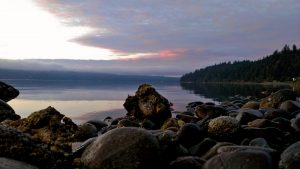Weighing the benefits of incidental habitat protection
2017 Annual Meeting of the Ecological Society of America:
Linking biodiversity, material cycling and ecosystem services in a changing world
6–11 August 2017
FOR IMMEDIATE RELEASE: Wednesday, 2 August 2017
Contact: Liza Lester, 202-833-8773 ext. 211, gro.asenull@retseLL
Regulations on land use that have been put in place to protect water quality, human lives, and property, may also protect plants and animals, by limiting the development of natural areas. To avert erosion and landslides, for example, landowners may be prohibited from building on or clearing trees from steep slopes. Trees flanking streams may be preserved to protect water quality.
How well does habitat provided by the second-hand protection of regulations stack up to habitat explicitly protected for conservation?
Joshua Lawler, a professor at the University of Washington, will present his research into this question at the Ecological Society of America’s 2017 Annual Meeting in Portland, Oregon.
Lawler, Michael Case, and a team from the University of Washington compared land that had come under incidental protection through regulations, to land acquired for conservation during the same 25-year span (1990-2015), in Washington State. Preliminary results indicate that land protected by regulation is not configured well to provide habitat for animals that need space to range.

Dabob Bay Natural Area, established in 1984 to protect rare examples of intact salt marsh and sand spit plant communities within one of Washington State’s highest functioning coastal spit and tidal wetland systems. Credit, Washington Department of Natural Resources (CC-BY-NC-ND 2.0).
Lawler’s talk, on Wednesday, August 9, is part of a session on Conservation Planning, Policy, and Theory. This session includes presentations on:
- Effects of Chinook salmon habitat policy on shoreline development in the urbanizing Green River Watershed (Puget Sound) — Alexis Kleinbeck, King County
- Identifying key areas to help climate-migrant species move across western North America — Caitlin E. Littlefield, University of Washington
- Putting an economic value on conservation of tropical endangered species in China — Jianjun Jin, Beijing Normal University
- The importance of measurement uncertainty in ecological management: it’s better to overestimate uncertainty — Carl Boettiger, UC Berkeley
COS 107-10 – Weighing the relative benefits of land-use regulation and land acquisition for protecting biodiversity
- Wednesday, August 9, 2017: 4:40 PM
- B110-111, Oregon Convention Center
- Joshua J. Lawler and Michael Case, School of Environmental and Forest Sciences, University of Washington, Seattle, WA
- Presentation abstract
- Contact: ude.wunull@relwalj
2017 Annual Meeting in Portland Oregon
6–11 August 2017
Environmental scientists from 50 U.S. states, U.S. territories, and countries around the world will converge on Portland, Oregon this August for the 102nd Annual Meeting of the Ecological Society of America. Five thousand attendees are expected to gather for nearly four thousand scientific presentations on breaking research and new ecological concepts at the Oregon Convention Center on August 6th through 11th, 2017.
ESA invites press and institutional public information officers to attend for free. To apply, please contact ESA Public Information Manager Liza Lester directly at gro.asenull@retsell. Walk-in registration will be available during the meeting.
- Annual Meeting website
- Media information
- Press releases
- Program
###
The Ecological Society of America, founded in 1915, is the world’s largest community of professional ecologists and a trusted source of ecological knowledge, committed to advancing the understanding of life on Earth. The 10,000 member Society publishes five journals and a membership bulletin and broadly shares ecological information through policy, media outreach, and education initiatives. The Society’s Annual Meeting attracts 4,000 attendees and features the most recent advances in ecological science. Visit the ESA website at https://www.esa.org.
